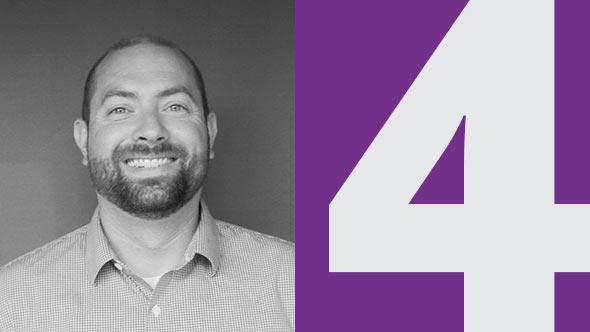In our fourth session, we discuss Android deployment strategies for enterprise organizations and what financial considerations need to be made in preparation for end-of-life and the replacement cycle.
Featuring




- Greg Henry, Vice President of Client Services, Barcoding, Inc. (Host)
- Dan Perlak, Vice President of Operations, Barcoding, Inc.
- Andrew Lynch, Director, Versatile Mobile Systems
- Brooks Schuler, Vice President of Finance, Barcoding, Inc.
Greg Henry: [00:00:00] Hello, this is Greg Henry, Vice-President of Client Solutions for Barcoding, Inc., and welcome to our fourth session in a five-part series called Android in the Enterprise. Joining me today are Dan Perlak, Vice-President of Operations for Barcoding, Inc., Andrew Lynch, President of Versatile Mobile Solutions, and Brooks Schuler, Vice-President of Finance at Barcoding, Inc.
[00:00:22] In today's session will be looking at Android Enterprise deployment strategies and financial considerations. As a background, many of our customers are not new to mobile computing. In fact, many have been using mobile computers for more than 10 years. As a result, they have more than likely experienced the end-of-life for a particular device, as well as the replacement cycle.
[00:00:46] In the era of Windows CE, this is pretty straightforward, as most of the applications and support tools remained the same; however, as we move into Android, it's more than just a device upgrade. It really requires new applications, new support tools, and in most cases, modifications to the systems that connect the mobile applications to their business systems.
[00:01:09] In this session, we'll explore several strategies that enterprises may adopt as they begin to deploy Android.
[00:01:17] Dan, you spend a lot of time supporting customers as they migrate to Android. Can you talk about the different approaches you've seen?
Dan Perlak: [00:01:25] Hey, Greg! Sure, anytime you start replacing devices that are currently deployed in the field, you're going to have some level of disruption and you're going to incur some risks.
[00:01:35] So, it's really critical that you take the proper planning steps to really assess what that impact is going to be and then consider a variety of options and scenarios, all while working within the unique constraints of the organization.
[00:01:47] So, one option is to say, “Okay, we're going to rip and replace all of our devices. We're going to do it all over the course of a few months, a few weeks, but it's going to be a one-time project. We're going to systematically just knock it all out.”
It's really ideal from a support perspective. You limit the number of active devices you're supporting, the number of active applications, different environments. You're cutting down on your variables from a support perspective. You keep your users. You keep your devices consistent—a nice clean cut, over. In a vacuum, I think this is the most ideal way to do it. But, as we all know, that's just not the way the world works. So, it's a significant event, but it's one and done—it's a one-time change management, but there's a lot of factors within that in terms of training all of the users on new applications and new devices.
[00:02:39] You have to set up new repair processes and new troubleshooting processes. And then, you also have to decide what you're going to do with your old equipment. We have a lot of experience doing this with customers that “rip and replace,” with a variety of approaches and modifications to it. But, there's a lot of things to consider there.
[00:02:57] Another option is a more gradual, deliberate replacement over time and there's a lot of different ways to do this. You can segment your users into divisions, or groups, based on age of devices, or quantity of devices, and then choose which ones to upgrade at that time. You can do it as they come off of a service contract, you can do it as they break; instead of having it repaired—you're going to replace it with a new device. The downside to this is you're going to have a real mix of devices and applications—sometimes within facilities, or within user groups. So, you want to be aware of the degree of change that you're introducing, and if it's reasonable to expect that your users will actually adapt to that gradual approach.
[00:03:47] It's not always possible. But, sometimes it's easier, depending upon the environment. So, what you really want to look at is, “How this change is going to impact our user? How is this going to impact our support staff?” And then, you really need to know what the cost considerations are if you go with a “rip and replace,” or if you go with a replace over time. Based on those three factors, we’ve helped a lot of organizations come up with typically some sort of a hybrid of the rip and replace and a replacement over time.
Greg Henry: [00:04:17] Thanks, Dan. Two great options! Andrew, you spend a lot of time with Legacy devices. You've been in this industry a really long time. Can you elaborate on what Dan was talking about as far as replacing over time and get into a little more detail on some of the strategies you work with our customers on?
Andrew Lynch: [00:04:36] Thanks, Greg. We have a number of different options. This really depends on the customer's time frame. We can keep the devices up and running through flat rate, or contract repair. We do provide support for a lot of our clients and that makes it much easier and faster to keep all the sites up and running.
[00:04:54] We can also rent out equipment until customers are ready for an upgrade. When the client does make the leap and buys the new equipment, we will also provide some kind of trade-in value for their old equipment. Most of our customers trade-in their old devices. We can either recycle them, rent them out to other customers as a stopgap, or resell the equipment to other customers that are not ready to upgrade.
[00:05:13] We've been providing this type of life cycle management service for over 25 years to our customers. We provide a great value and a seamless transition to all of our customers’ next generation solutions.
Greg Henry: [00:05:26] Great information, Andrew. The last topic I'd like to discuss is the financial one. Legacy users of mobile computers have gotten used to depreciating these devices over five or more years.
[00:05:36] However, as we discussed in session 3, the rapid iterations of Android, and the increasing hardware requirements needed to support these iterations, is forcing Enterprise users to upgrade more often. Looking to the future, we see a day when a three-year replacement cycle will become normal.
[00:05:53] In response, leasing and Hardware-as-a-Service are financial models that are beginning to really gain more momentum—a way to smooth out the CAPEX crunch created by shorter refresh cycles.
[00:06:06] So, Brooks, tell our audience about Barcoding's OnePay program and talk a little bit about Hardware-as-a-Service.

Brooks Schuler: [00:06:12] Absolutely. Thank you. Our OnePay program is our leasing program here at Barcoding. The nice thing is that it allows our customers a lot of flexible options as far as how they're going to purchase or acquire their new equipment. There are many advantages to that, but the biggest one I could see is cash flow. Many customers may not have the capital expenditures to be able to purchase equipment outright, and this allows them to spread that payment out, as well as align the cash flows with the costs on the PNO. It also allows customers to combine their hardware payment with their software and services payments.
[00:06:48] A lot of times, with the cloud software, people are making monthly payments as well as one easy monthly payment for all things involved—from the hardware, to the software, all the way down to the data usage. The other advantage is Hardware-as-a-Service, as you call it, and this allows you to align the hardware with all of the other components that go into it, including software, the service contract, the data usage, and everything into one easy monthly cost, and one easy monthly payment. In addition, the lease will allow for upgrades, as opposed to getting stuck with outdated equipment after three years. In a leasing scenario, after three years is up, you would be able to refresh into newer equipment, without an additional large capital expenditure, basically keeping your monthly expenses and your monthly cash flows more consistent and easier to predict.
Greg Henry: [00:07:36] Thanks, Brooks! That was good input and this concludes session four of Android in the Enterprise. For our fifth and final session in this series, we'll be discussing how to maintain your ROI after you've deployed it.
[00:07:50] I want to thank again Dan, Andrew, and Brooks for their insights and real-world experience. Thank you to our listeners for listening and looking forward to our final session.
Contact us for your mobile computing needs!









